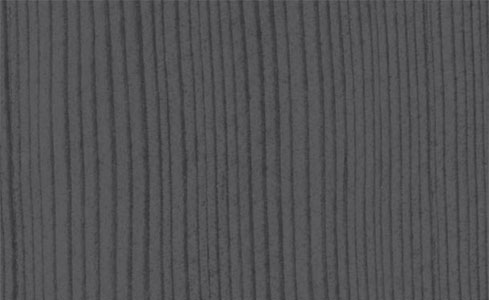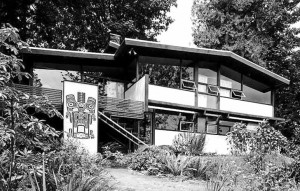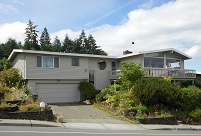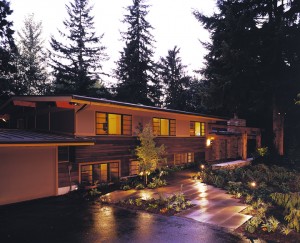Julie Campbell, one of the Architects at CTA Design Builders Inc., specializes in Mid-Century design and architectural history and has given lectures on this topic around the region. This series of four articles will discuss strategies for remodeling your Mid-Century home in ways that respect the original architectural intention, capture the contemporary appreciation for Mid-Century design and integrate those classic elements with today’s modern lifestyle. With a little contemporizing and a healthy respect for Mid-Century style, you can give your home another 50 great years!
MID-CENTURY MODERN HISTORY
Some historical background is helpful to understand the radical change in architectural thinking that led to the Mid-Century style. Post-war design advances catapulted our world out of traditional architectural styles and into modernism. Contemporary residential architecture began playing by a whole new set of rules: buildings were functional, rational and devoid of ornament; designs incorporated clarity of structure, clean geometric forms, large expanses of glass, and very little ornamentation. Floor plans were simple and more open than the traditional home; decks became large and windows became even larger! Here in the Pacific Northwest, local architects embraced that bold new approach. Our vast stands of timber became their structural material of choice. Big views led to big decks, expanses of glass and big cantilevers. Constant rain (or relentless sun) led to deep overhanging eaves. Many of these innovative architects designed homes in the Somerset neighborhood of Bellevue that still grace its hillside today: Gene Zima, Lionel Pries, and Paul Kirk to name a few. Most mid-century homes in our region, however, were built in great quantities during the post-war housing boom by contractors who followed the design and building trends. You can see the similarities with the architect-designed homes once you start looking for the same simple design features – take a look.
Unfortunately, Mid-Century Architecture hasn’t always been well-loved.
Sometime around the late ‘70s to early ‘80s, homeowners became conflicted between the memory of traditional design and the new modernism of their homes. Many residences underwent “updates” in ways that today in fact, make the home appear even more tired and outdated than if nothing had been altered in the first place.
How Mid-Century Architecture is setting current trends
Fortunately for these well-built gems, the architectural style of the ‘50s and ‘60s is enjoying a great surge of renewed appreciation. “Mid-Century” is definitely a hot trend in both architecture and interiors these days! Bellevue’s Somerset neighborhood is a very unique mid-century enclave, perfect for this study in Mid-Century Design. Developed in the 1950s, most all of the Somerset homes showcase some of the most well-preserved typical “Mid-Century Modern” residences in the Greater Seattle area. But many that succumbed to the “updates” of 40 years ago are crying for design relief, or should we call it contemporary restoration?
Contemplating Contemporizing your Mid-Century Modern?
The first word of advice: SIMPLIFY!
Many homes were retrofitted with “traditional” elements such as shutters, divided light windows, stained glass doors, and craftsman light fixtures, in an attempt to make these homes look cozier or friendlier. These elements were totally out of character with their original style, however, causing the overall effect 40 years later to be even more disjointed and dated-looking. These things have to go.
Next step: Analyze the Exterior.
Check your house for those typically Mid-Century features: clarity of structure, clean geometric forms, large expanses of glass, big decks, big cantilevers, deeply overhanging eaves. Usually these elements are worth preserving as-is and can be enhanced to good effect with a new paint scheme. Sometimes the only additional element needed to contemporize a mid-century exterior is to add a more obvious entry feature emphasizing the front door area. Finally, Mid-Century floor plans are usually simple and structurally sound enough to remove a few walls and create a more open spatial quality that resonates with today’s lifestyle.
More on this will follow in the next installment of Mid-Century Magic: Remodeling Strategies for Mid-Century Interiors!
Categories:
Categories:
Tags:
Tags:





